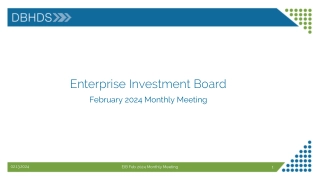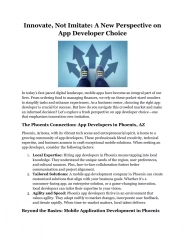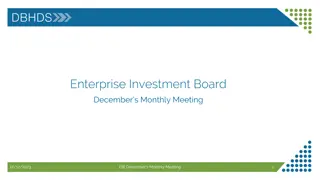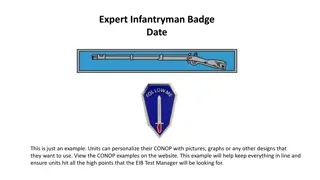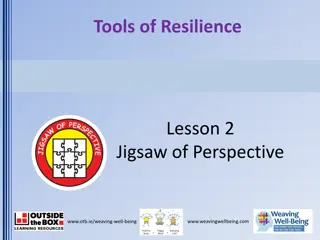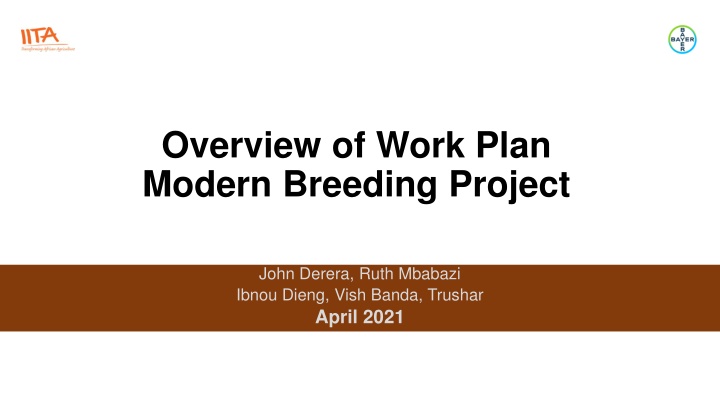
Strategic Pillars of Modern Breeding Project for Food Security
"Collaborate with growers to achieve food security through operational excellence, organizational leadership, and technology advancements. Focus on strengthening people development, smallholders benefits, and breeding efficiencies."
Download Presentation

Please find below an Image/Link to download the presentation.
The content on the website is provided AS IS for your information and personal use only. It may not be sold, licensed, or shared on other websites without obtaining consent from the author. If you encounter any issues during the download, it is possible that the publisher has removed the file from their server.
You are allowed to download the files provided on this website for personal or commercial use, subject to the condition that they are used lawfully. All files are the property of their respective owners.
The content on the website is provided AS IS for your information and personal use only. It may not be sold, licensed, or shared on other websites without obtaining consent from the author.
E N D
Presentation Transcript
Overview of Work Plan Modern Breeding Project John Derera, Ruth Mbabazi Ibnou Dieng, Vish Banda, Trushar April 2021
Crops to End Hunger Funders Vision Crops to End Hunger Funders Vision Six Funders Requests of CGIAR Centres 1. Pipeline investment cases /product profiles 2. Alignment of breeders' incentives to ensure high rates of GG 3. Strategic Plan for the continuous development of varieties 4. Quantitatively optimized breeding pipelines 5. Shared breeding support services 6. Improvement of national breeding programs (NARS)
EiB EiB vision vision EiB components of a world class breeding program Use the most appropriate management practices and effective research methods to develop products that meet targeted needs of our customers Develop and actively drive a culture of purposeful and measured improvement
Going to the Balcony View of Operations: Going to the Balcony View of Operations: Desired State Desired State Co-learning & integrated approaches amongst breeders & shared facilities Critical roles of other disciplines integrated Critical upstream research to facilitate breeding Sustainable and efficient path to market - breeding & seed systems Integrated mechanisms and metrics for assessment of genetic gains and varietal turnover in farmers fields Professionalised breeding to enhance utilization, productivity and throughput Strengthened networking with NARS partners to implement product development (clear roles & responsibilities)
Modern Breeding Project Strategic Pillars Collaborate to help growers achieve food security Customer Focus Operational Excellence Organizational Leadership Strengthen people development, Change management, and Long range planning Deliver smallholders benefits, Strengthen value chain engagement, and Enable access to technology Implement breeding efficiencies, Program management, and Pipeline effectiveness Modern Breeding Project (MBP) Goal: To share know-how in technology advancements with plant breeders to enable increased genetic gain in Africa 5
Bayer Breeding Partnerships: Expected Outcomes IITA Capacity Development/Focus Areas Genetic gain measurement 1 Product design/ Field testing 4 Measurement of Genetic Gain Analysis of historic genetic gain and expected future genetic gain Establishment of KPIs and structure of trials to be adopted by the breeding programs Measurement of heritability SOPs & Documentation Stage-Gate System Approach Variety replacement strategy Description of product profiles and portfolio management Parent selection and production of new genetic variation Genetic development and management Establish Pipeline LRP and Costing Market intelligence and consumer information for demand led breeding Equipment acquisition Farm Management Irrigation system On-farm safety management JSA/SOPs & Documentation 25% Digitalization/ Phenotyping Adoption and use of improved phenotypic approaches -markers, trial design and management, database tools SOPs & Documentation 2 Pre-/Advancement Process 3 Establishment of formalized pre- advancement and advancement practices and performance analysis Market alignment with product concepts Linkages with NARs Product pipeline management 10% 30%
2021 MBP Project Timelines 2021 MBP Project Timelines Bayer Teams working in collaboration with the IITA Teams Jan Feb Mar Apr May Jun Jul Aug Sept Oct Nov Dec IITA/Bayer & EiB teams Establishing Networks Ibnou Dieng Trushar Shah Measure Genetic Gain Across crops: GG Data analysis Operational Excellence Track Operational Costs Adisa Adebayo John Derera & IITA Crop Leads Banana/Cowpea Roots & Tubers Maize Soybean Improve Phenotypic Data IITA Crop Leads & Core team Alick Mulenga Banana/Cowpea Roots & Tubers/ Maize Soybean Customer Focus Vish Banda Dean Muungani Banana/Cowpea/ Cassava Advancements Soybean/ Yam/Maize
Modern Breeding Strategy Implementation Report Modern Breeding Strategy Implementation Report Genetic Gain Assessment: baseline, check strategy and trial design Genetic Gain Assessment: baseline, check strategy and trial design Key Achievements (list top 3- 5) Challenges (list top 3-5, if any) GG working group (Bayer and IITA) established Methodology for the GG calculation identified, outlined by EiB Biometrics at IITA and regional level supported with CtEH funds
Recommendations: Experimental Design Stage-gate approach Early and intermediate stages: augmented and p-rep designs Late stages: alpha-lattice designs 5% to 10% of plots allocated to checks Locations to be chosen representing the TPE: the better we cover the TPE the more accurate estimates of the genotypes means consider sparse testing
Recommendations: Experimental Design (Check strategy) Checks Fixed gg checks Numbers 2 Features Dynamically stable: should be present in all the trials regardless of location and time Commercial varieties 4 Commercial varieties or competing products currently being grown in the wide target market and to be beaten according to the replacement strategy in the product profile, and that show a GxE pattern similar to the cohorts being tested; to be renewed at the rate of one per year locally grown due to their specific preference (e.g., resistance, performance, etc.); to be renewed as desired Local checks 1
Recommendations: : Organization and extraction of the data Data to be organized: by pipeline of interests by market segment targeted (TPE + product features): e.g., Drought conditions environments late maturity for a time period of interest (e.g., 10 years or 5 years). for a given germplasm stage(s) stage 3 or stage 4 for the trait(s) of interest: e.g. yield, or an index of traits if economic weights are available to track the dates of the different activities in the program to estimate the year of origin (date of crossing, date of line development, date of first introduction, etc.)
Product Management Product Management DIFFICULT RTB Crops DIFFERENT Teams are still in projects and difficult to get all disciplines attention and participation GOOD Organize preparatory meeting for NARS separately Varieties are advanced as part of defined project outcomes Product Advancement Meetings for Yam and Cassava were conducted (March and April) There seems some confusion between Market segments and product profiles Testing is not adequately done (must win markets) before advancements Concepts on developing product profiles and Portfolio overview was introduced Variety advancements should not be predefined, lot of discussion needs to happen and active participation from NARS is must There is no plan in place for the varieties after release Participation from NARS and hubs across SSA 12



